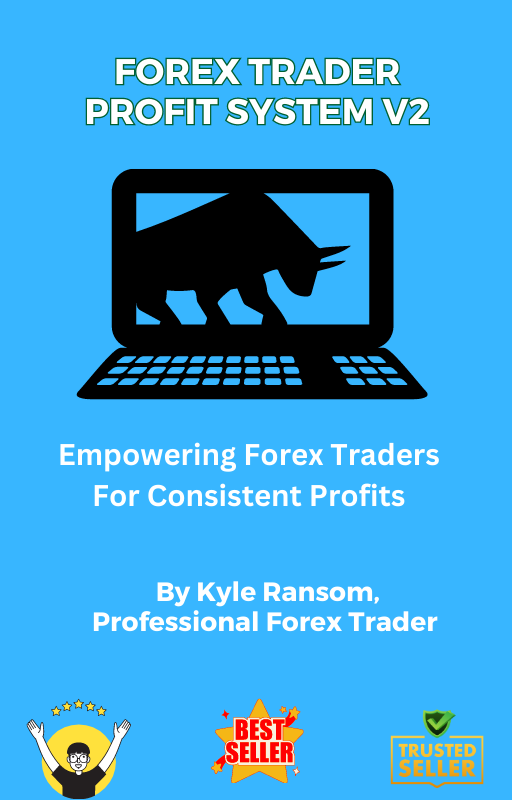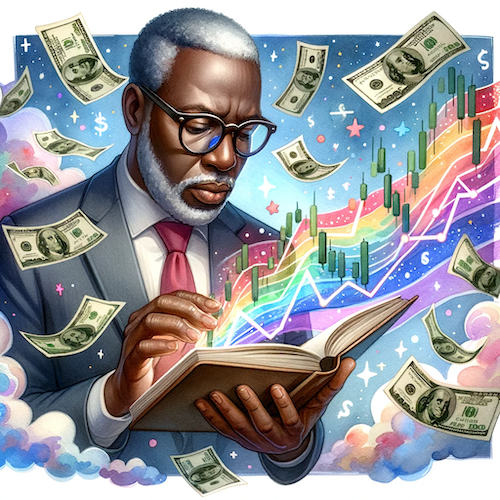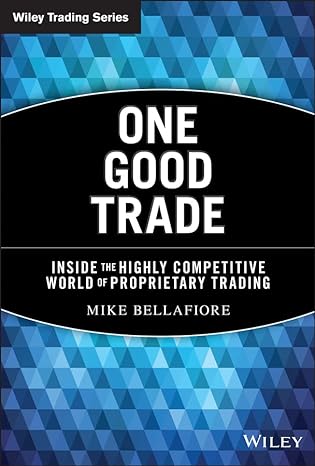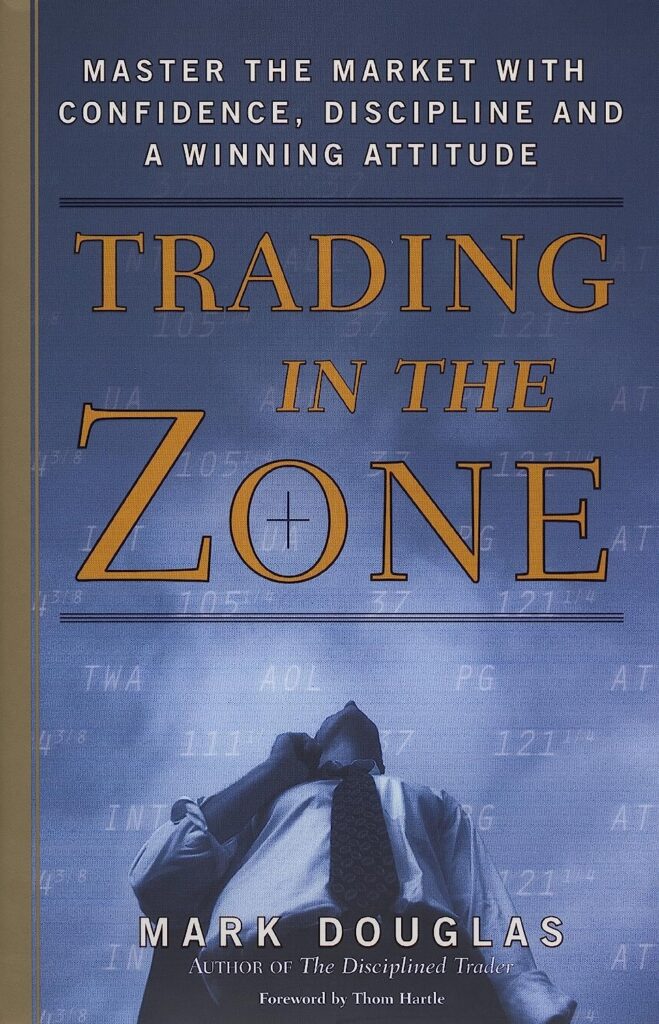Unlocking the Secrets How To Trade Forex For Beginners Explained
Disclaimer:
Forex Trading Risk Acknowledgment:
The content provided in this guide is strictly for educational and informational purposes only. Forex trading involves significant risks, including the potential loss of the invested capital. Past performance in the Forex market does not guarantee future results. Any investment decisions made by the reader are solely their responsibility, and the author or publisher of this guide is not liable for any potential losses or damages incurred.
It is strongly recommended that those new to Forex trading seek advice from a professional financial advisor. Before making any investment, it’s essential to conduct thorough research and understand the risks associated with Forex trading fully.
By continuing to read this article, you acknowledge and accept the risks associated with Forex trading and understand that the author or publisher is not providing financial advice but rather sharing information for educational purposes.
Introduction to How To Trade Forex Beginners
Drawing from my personal journey as a serial entrepreneur and my hands-on experience in Forex trading, I’ve curated unique insights that aren’t just theoretical but are tried and tested in the real world. This article isn’t just another Forex blog post; it’s a reflection of my own successes and lessons learned over the years.
Firstly, it’s crucial to understand that forex trading is not a get-rich-quick scheme. It requires time, patience, and a deep understanding of the forex market. Continuous learning is essential. The forex market is dynamic and constantly changing, so traders need to stay updated with the latest market trends, news, and strategies.
Forex trading, also known as foreign exchange trading or currency trading, is the act of buying and selling currencies on the foreign exchange market with the aim of making a profit. It is a highly popular form of financial trading due to its 24/7 availability, the liquidity of the market, and the potential for significant returns.
Forex trading operates on the basic principle of currency exchange rates; traders speculate on the future direction of these rates, buying currencies they believe will increase in value and selling those they believe will decrease. The difference in price from when you buy and sell the currency is your profit or loss.
How to trade forex for beginners involves substantial risk and is not suitable for everyone. It requires a good understanding of financial markets and macroeconomic factors that influence currency values. It also requires a disciplined approach to risk management to protect against potential losses.
Forex trading is conducted over-the-counter (OTC), meaning trades are not carried out on a centralized exchange like stocks or commodities. Instead, currencies are traded directly between two parties in an interbank market. This market is made up of banks, corporations, investment firms, hedge funds, and individual traders worldwide.
In forex trading, currencies are always traded in pairs, such as the Euro against the US Dollar (EUR/USD) or the British Pound against the Japanese Yen (GBP/JPY). The first currency in the pair is the ‘base’ currency, and the second is the ‘quote’ currency. The exchange rate represents how much of the quoted currency is needed to buy one unit of the base currency.
Forex trading is a complex and risky activity that requires a solid understanding of financial markets. However, with the right education, tools, and approach, it can potentially be a profitable venture.
How To Trade Forex For Beginners Understanding the Basics of Forex Market
The Forex market, also known as the foreign exchange market, is a global marketplace where currencies are traded. It is the largest and most liquid financial market in the world, with an average daily trading volume exceeding $5 trillion.
The Forex market operates 24 hours a day, five days a week, and it has no centralized location. Instead, trading is conducted electronically over-the-counter (OTC), which means transactions occur via a network of computers, rather than on a centralized exchange.
In the Forex market, currencies are traded in pairs. The first currency in the pair is the base currency, and the second is the quote currency. The exchange rate between the two currencies specifies how much of the quoted currency is needed to buy one unit of the base currency. For example, if the EUR/USD exchange rate is 1.20, it means you need 1.20 US dollars to buy one euro.
Traders make money in the Forex market by speculating on the future direction of an exchange rate. If a trader believes that the euro will appreciate against the US dollar, they will buy the EUR/USD pair. If the exchange rate rises, they can sell the pair for a profit. Conversely, if they believe the euro will depreciate against the US dollar, they can sell the pair, and then buy it back at a lower price for a profit.
Understanding the basics of the Forex market is the first step towards becoming a successful Forex trader. It’s important to familiarize yourself with the market’s unique characteristics, the concept of currency pairs, and the mechanisms of making a trade. This foundational knowledge will serve as the basis for developing effective trading strategies and managing risk.

How To Trade Forex Beginners Essential Forex Trading Terminology
Forex trading, like any other financial market, has its unique set of terminologies that every beginner must familiarize themselves with. Understanding these terms is crucial as they form the basis of communication in the forex market.
Firstly, a ‘currency pair’ is a fundamental concept in forex trading. It refers to the quotation of two different currencies, with the value of one currency quoted against the other. The first listed currency is known as the ‘base currency’, and the second is the ‘quote currency’. For example, in the EUR/USD pair, EUR is the base currency, and USD is the quote currency.
Another essential term is ‘pip’, which stands for ‘percentage in point’. It is the smallest price move that a given exchange rate can make. For most currency pairs, a pip is the fourth decimal place in the exchange rate.
The ‘spread’ is the difference between the buy price (also known as the ‘bid’) and the sell price (also known as the ‘ask’). It is essentially the cost of trading, as brokers typically earn through the spread.
‘Long’ and ‘short’ positions are also fundamental terms in forex trading. Going ‘long’ means buying a currency pair with the expectation that the base currency will rise in value. Conversely, going ‘short’ means selling a currency pair, anticipating that the base currency will fall in value.
Lastly, ‘leverage’ is a tool provided by brokers that allows traders to control larger positions with a smaller amount of money. It’s expressed as a ratio, such as 1:100. However, while leverage can magnify profits, it can also amplify losses.
Understanding these terms is the first step towards navigating the forex market effectively. As you gain more experience, you’ll encounter more complex terminologies, but these basics will always remain fundamental.
How To Trade Forex Beginners Step-by-Step Guide to Making Your First Forex Trade
Forex trading, also known as foreign exchange trading, involves buying and selling currencies on the global market. As a beginner, making your first forex trade can seem daunting, but with a clear understanding and a systematic approach, it can be a straightforward process.
Firstly, you need to choose a reliable forex trading platform. This platform should be user-friendly, regulated, and offer a demo account for practice. Once you’ve chosen your platform, you need to open a trading account. This usually involves providing some personal information and depositing a minimum amount of funds.
Next, you need to decide which currency pair you want to trade. The most commonly traded pairs are EUR/USD, USD/JPY, and GBP/USD. It’s advisable to start with these major pairs as they have the most liquidity and are less volatile than exotic pairs.
Before you make a trade, it’s crucial to conduct a market analysis. This can be either fundamental analysis, which involves looking at economic indicators and news events that could affect the currency’s value, or technical analysis, which involves studying price charts and patterns.
Once you’ve done your analysis, you can place your first trade. This involves setting the amount you want to trade, deciding whether you want to buy or sell the currency pair (based on whether you think the first currency in the pair will strengthen or weaken against the second), and setting your stop loss and take profit levels. These levels are important as they automatically close your trade when the price reaches a certain point, helping to manage your risk.
Finally, monitor your trade and the forex market. If the market moves in your favor, you could make a profit. However, if it moves against you, your stop loss should protect you from significant losses.
Remember, forex trading involves risk and it’s possible to lose more than your initial investment. Therefore, it’s important to start small and use only risk capital (money that you can afford to lose). As you gain experience and confidence, you can gradually increase your trading size.
How To Trade Forex Beginners: Tips and Strategies for Successful Forex Trading
Forex trading can be a lucrative venture if done correctly. As a beginner, it’s crucial to understand and implement effective strategies to increase your chances of success. Here are some tips and strategies to guide you on your forex trading journey.
Firstly, it’s essential to have a clear trading plan. This plan should outline your financial goals, risk tolerance, methodology, and evaluation criteria. It’s your roadmap to navigate the forex market, helping you make informed decisions and avoid impulsive trades.
Secondly, always start with a demo account. This allows you to practice your trading strategies without risking real money. It’s an excellent way to familiarize yourself with the trading platform and understand market trends and patterns.
Thirdly, focus on a single currency pair when starting. The forex market is vast and can be overwhelming. By focusing on one currency pair, you can concentrate your learning and understand the factors that influence its value.
Fourthly, use leverage wisely. While leverage can magnify your profits, it can also amplify your losses. As a beginner, it’s advisable to use lower leverage until you’re more comfortable with risk management.
Fifthly, keep up with financial news and events. Economic events can significantly impact currency values. By staying informed, you can anticipate market movements and make timely trades.
Lastly, always analyze your trades, both successful and unsuccessful ones. This will help you understand what works and what doesn’t, allowing you to refine your strategies over time.
Remember, forex trading is not a get-rich-quick scheme. It requires patience, discipline, and continuous learning. With the right approach and mindset, you can build a successful forex trading career.
How To Trade Forex Beginners Common Mistakes to Avoid in Forex Trading
Forex trading, while offering numerous opportunities, also comes with pitfalls that traders, especially beginners, often fall into. Avoiding these common mistakes can significantly improve your trading performance and reduce potential losses.
I have committed every last one of these mistakes so please pay attention to these points. It will save you a lot of pain when you start trading.
| No. | Common Mistakes | Description |
|---|---|---|
| 1 | Overleveraging | Leverage allows traders to control a larger position with less money. While it can increase profits, it can also lead to greater losses. Overleveraging without understanding its effects can quickly deplete an account. |
| 2 | Overtrading | Driven by emotions or the urge to recover losses, some traders trade too often. This can result in higher transaction costs and significant losses. It’s vital to have a strategy and not trade impulsively. |
| 3 | Ignoring Stop-Loss | Not using or frequently adjusting a stop-loss, hoping the market will turn, can be detrimental. A stop-loss protects your capital, and ignoring it can risk a large part of your investment. |
| 4 | Lack of a Trading Plan | Trading without a clear plan is like navigating without a map. A trading plan should outline entry and exit points, risk management rules, and criteria for taking profits. |
| 5 | Chasing the Market | Reacting to every market movement or news without a strategy can lead to poor decisions. It’s essential to avoid making trades without proper analysis. |
| 6 | Letting Emotions Rule | Emotional trading, influenced by fear or greed, can result in irrational decisions. It’s crucial to remain calm and stick to the trading strategy, especially during market volatility. |
| 7 | Neglecting Continuous Education | The forex market is ever-changing. Strategies that work today might not be effective tomorrow. Continuous education and staying updated with market trends and news are crucial. |
| 8 | Ignoring Fundamental Analysis | While technical analysis is vital, ignoring fundamental analysis can be a mistake. Economic events, political situations, and other macro factors can have a significant impact on currency movements. |
| 9 | Over-relying on Robots & Signal Services | Automated trading tools and signal services can be helpful, but relying on them without understanding their strategies can be risky. |
| 10 | Failing to Review and Analyze Trades | Not reviewing past trades, both wins and losses, is a missed learning opportunity. Regular analysis can help in identifying what works and what needs improvement. |

***My First Mistake:
Before joining The Apiary Fund, I opened a live trading account with Oanda and invested $1,000. Within an hour, I lost everything. The lesson learned is to never trade with your own money without testing your trading plan first. especially when you are starting out. It is better to start with a demo account to practice first or do what I ended up doing, sign up with Apairy Fund, and learn how to trade under their structure course. While some may choose to risk their own funds, I believe it’s wiser to become proficient enough to trade with other people’s money, avoiding personal financial risk.
***My Second Mistake:
I immediately started trading every pair I could without mastering one currency pair. I learned later that it would have been best to learn to trade one pair and then move on to another one. Learning to trade is a slow and steady process. There is no rush.
***My Third Mistake
I have missed so many trades and lost big on trade by not following the news. You must be ready for them. My advice is to not trade before a big new event happens and wait to see how the market reacts.
How To Trade Forex Beginners Risk Management in Forex Trading
Risk management is a crucial aspect of forex trading that beginners must understand and implement right from the start. It involves identifying potential risks, assessing their impact, and taking steps to mitigate them.
The first step in risk management is understanding that forex trading involves substantial risk. The forex market is highly volatile, and prices can fluctuate rapidly. This means that you can potentially make large profits, but you can also suffer significant losses. Therefore, it’s essential to only invest money that you can afford to lose.
One of the most effective risk management strategies is to use stop-loss orders. A stop-loss order is a command to close out a trade when the price of a currency pair reaches a certain level. This can help limit your losses if the market moves against you.
Another important risk management strategy is to diversify your portfolio. This means trading a variety of currency pairs, rather than focusing on just one. Diversification can help spread your risk and potentially increase your chances of making a profit.
Leverage is another important concept in risk management. While leverage can amplify your profits, it can also magnify your losses. As a beginner, it’s advisable to use leverage sparingly until you gain more experience and confidence.
Lastly, never let emotions dictate your trading decisions. Fear and greed can lead to poor decisions, such as chasing losses or holding onto a losing trade in the hope that the market will turn around. Always base your trading decisions on careful analysis and sound strategy.
Effective risk management can help protect your investment and increase your chances of success in forex trading. It’s not about avoiding risk entirely, but rather about understanding and managing it effectively.
How To Trade Forex Beginners Utilizing Forex Trading Tools and Software
As a beginner in forex trading, it’s crucial to familiarize yourself with the various tools and software available to aid your trading journey. These tools can significantly enhance your trading efficiency and accuracy, providing you with real-time data, market analysis, and other essential information.
Firstly, forex trading platforms are the primary tool you’ll need. They provide the interface for you to execute your trades. Some popular platforms include MetaTrader 4 and 5, cTrader, and NinjaTrader. These platforms come with various features such as charting tools, technical analysis indicators, and automated trading capabilities. As a beginner, it’s advisable to start with a platform that offers a user-friendly interface and comprehensive educational resources like Tradingview.
Next, consider using forex trading software or robots for automated trading. These tools can execute trades on your behalf based on pre-set criteria. While they can save time and eliminate emotional trading, it’s important to understand their workings and not rely solely on them.
Forex signal services are another useful tool. They provide trade suggestions based on market analysis, which can be particularly helpful for beginners who are still learning to analyze the market. However, always cross-check these signals with your analysis to avoid blind trading.
Lastly, economic calendars are essential tools for every forex trader. They provide schedules of major economic events that can impact currency prices. By keeping track of these events, you can anticipate market movements and plan your trades accordingly.
While these tools and software can significantly aid your trading, they are not a substitute for a solid understanding of forex trading fundamentals. Always invest time in learning and improving your trading skills.
How To Trade Forex Beginners Building a Sustainable Forex Trading Career

Embarking on a forex trading career can be an exciting yet challenging endeavor. The key to building a sustainable career in forex trading lies in continuous learning, disciplined trading, and effective risk management.
Disciplined trading is another crucial aspect. It’s easy to get swayed by emotions in the heat of trading. However, successful traders stick to their trading plans and strategies, regardless of market conditions. They also avoid overtrading, which is a common mistake among beginners.
Effective risk management is the backbone of a sustainable forex trading career. It’s important to understand that losses are part of the trading process. Successful traders always set a stop loss level to limit their potential losses. They also never risk more than a small percentage of their trading capital on a single trade.
Moreover, diversification is a good strategy to mitigate risk. Instead of putting all your eggs in one basket, consider trading different currency pairs.
Lastly, always review your trades. This will help you identify your strengths and weaknesses and improve your trading strategies.
Building a sustainable forex trading career requires a combination of continuous learning, disciplined trading, and effective risk management. It’s a long-term commitment, but with patience and perseverance, you can achieve success in forex trading.
How To Trade Forex For Beginners: Automation and Bots
A Double-Edged Sword
In the ever-evolving world of Forex trading, automation, and trading bots have emerged as powerful tools for traders. These automated systems can execute trades at lightning speed, scan multiple charts for patterns, and even operate around the clock, capitalizing on opportunities while you sleep.
However, as enticing as they sound, it’s crucial to approach them with caution, especially for beginners.
Why? While these tools can magnify your trading efficiency, they can also amplify mistakes if not used correctly. A bot is only as good as the strategy it’s programmed to follow. If the underlying strategy is flawed, the bot can execute a series of losing trades in rapid succession, leading to significant losses.
Moreover, relying solely on automation can lead to a lack of understanding of the market’s nuances. The Forex market is influenced by a myriad of factors, from geopolitical events to economic indicators. A human trader can interpret news and adjust strategies in real time, while a bot might not always be programmed to understand these subtleties.
The Key Takeaway: Before diving into the world of automation and bots, it’s paramount to hone your trading skills. Understand the market, develop a solid trading strategy, and gain experience. Only then, when you have a deep understanding of the market and a tested strategy, should you consider automating it. And even then, always monitor the bot and be ready to intervene if things don’t go as planned.
Remember, in Forex trading, there’s no substitute for knowledge, experience, and a well-thought-out strategy. Automation can be a valuable assistant, but it should never replace the human touch.
Your journey and feedback are invaluable. At the end of this article, I invite you to share your experiences, ask questions, or provide feedback. Let’s foster a community where we learn and grow together.
How To Trade Forex Beginners: Best Resources To Get Started
Here are some resources that I recommend that have helped me get started and become a better trader:
A forex fund that offers a training program to learn Forex as a beginner and get funded and trade their money. These guys taught me how to trade to get funded. I am truly grateful.
A free online learning platform for Forex and Crypto. This site helped me discover the world of forex trading
This is one of the largest and most loved Forex trading channels on YouTube. The gentleman who runs the YouTube Channel is awesome! He can definitely help you.
Recommended Reads:
This content contains affiliate links and we receive a commission at no extra cost to you. Thanks for your continued support.
One Good Trade: Inside the Highly Competitive World of Proprietary Trading

Trading in the Zone: Master the Market with Confidence, Discipline, and a Winning Attitude

Frequently Asked Questions (FAQs)
- What is Forex Trading?
- Forex trading, at its core, is similar to the currency exchange you might do while traveling abroad. It involves buying one currency and selling another, with the exchange rate fluctuating based on supply and demand. The forex market is a global marketplace that operates 24 hours a day, five days a week.
- How are currencies traded in the Forex market?
- Currencies are assigned a three-letter code, similar to a stock’s ticker symbol. All forex trading is expressed as a combination of the two currencies being exchanged. For example, EUR/USD represents the euro-to-dollar exchange rate.
- What are the major currency pairs in Forex trading?
- The major currency pairs, which account for about 75% of trading in the forex market, include EUR/USD, USD/JPY, GBP/USD, AUD/USD, USD/CAD, USD/CHF, and NZD/USD.
- How are Forex trades quoted?
- Each currency pair represents the current exchange rate for the two currencies. The base currency is always expressed as 1 unit, while the quote currency varies based on the current market.
- What are the different ways to trade Forex?
- There are three primary ways: The spot market (real-time exchange), the forward market (binding contracts for future exchange rates), and the futures market (standardized contracts for future exchanges on an official exchange).
- What factors influence the Forex market?
- Currency prices are influenced by supply and demand, interest rates, central bank policies, economic growth rates, political scenarios, and other macro factors.
- What are the risks associated with Forex trading?
- Due to the use of leverage and margin, forex trading can be riskier than other types of assets. Currency prices fluctuate constantly, and while leverage can amplify profits, it can also magnify losses. There’s also the risk of margin calls, transaction costs, and potential fraud in the market.
- How prevalent is retail trading in the Forex market?
- Retail trading, which refers to trading by non-professionals, accounts for just 5.5% of the entire global forex market.
- Is Forex trading profitable for individual investors?
- On average, 71% of retail FX traders lose money, making forex trading a strategy that might be best left to professionals.
- How does leverage work in Forex trading?
- Leverage allows traders to participate in the forex market without putting up the full amount of money required for a trade. However, trading with leverage requires an upfront deposit known as margin.

Leave a Reply